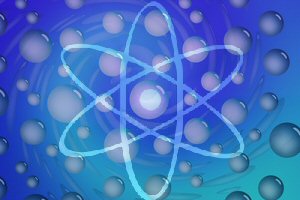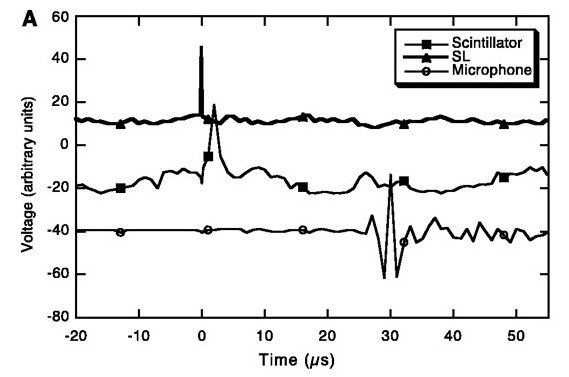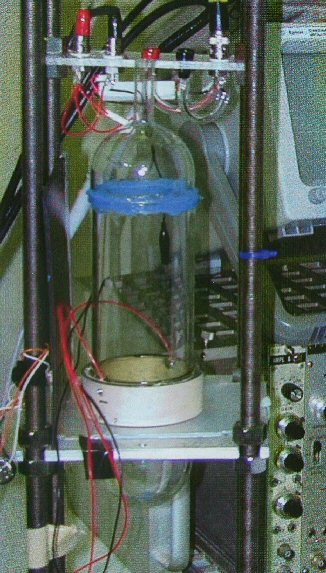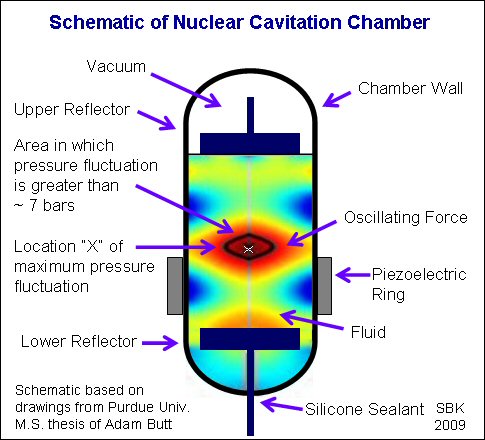
Oak Ridge Nuclear Cavitation Confirmation
July 23, 2013 – By Steven B. Krivit –
This is Part 6 of “2001 Oak Ridge Nuclear Cavitation Confirmation Uncovered.”
This is a New Energy Times Special Report. The first part of this series published on July 18, 2013.
Science Accepts Taleyarkhan Group’s Paper (January 2002)
On Jan. 30, 2002, Science accepted the Taleyarkhan group’s paper and scheduled it for publication on Feb. 14.
The acceptance, however, triggered another round of internal conflict. ORNL management asked Science to delay publication to allow time to sort it out.
Around this time, ORNL management asked Taleyarkhan to include Shapira as a co-author of the forthcoming Science paper.
“Something – I don’t know what – happened in January that resulted in ORNL management’s request of me to include Shapira as co-author,” Taleyarkhan wrote. “I had to go along with their instructions. But I could not speak for RPI nor for RAS.”
Approximately Feb. 1, after conferring with his group, Taleyarkhan told ORNL management that his group gave a resounding “no” to the idea of including Shapira as a co-author. Shapira and Saltmarsh protested further.
Oak Ridge Gives Final Clearance (February 2002)
In an attempt to resolve the conflict, ORNL management scheduled a review meeting, which took place on Feb. 19, 2002. Riedinger, Roberto, Taleyarkhan, Block, Lahey, Shapira, Saltmarsh and three or four external advisers from universities attended. The advisers included R. Gil Gilliland, associate director of the Energy and Engineering Sciences Directorate at ORNL, William Bugg, research professor at Stanford University and former head of the Physics Department at the University of Tennessee, and Kirby Kemper, head of the Physics Department at Florida State University.
During the meeting, Shapira and Saltmarsh expressed their objections to the Taleyarkhan group’s pending publication in Science.
“Riedinger led the meeting. He accepted the tritium evidence as compelling and referred to that as the smoking gun. He recommended placing that evidence first in the results section, followed with the findings related to neutrons-gammas, followed by the SL,” Taleyarkhan wrote.
“Nigmatulin was convincing with his theoretical foundations,” Taleyarkhan wrote. “Jack Harvey, an internationally recognized pioneer in nuclear instrumentation at ORNL, in advance of the meeting, had reviewed and confirmed the neutron-gamma pulse-shape discrimination and detection system and protocols. Murray’s testimony on tritium and his independent vetting of the tritium data and itsmode of acquisition and analysis persuaded all the people in the room that, although there was room to improve the neutron-gamma monitoring aspects together with SL coincidences, the crux of the necessary evidence (neutrons, tritium and accompanying theoretical foundation) was sufficient such that ORNL would, as an institution, stand behind us.”
Block recalled the meeting, in an e-mail to New Energy Times.
“I commented on the detector that Shapira and Saltmarsh used and pointed out that it was really much too large for an accurate measurement and that it could have suffered from electronic overload (dead time loss) that led to a reduced signal rate. There were neutral – as far as I know – visitors from universities who listened to our arguments and recommended that ORNL go forward with our Science publication. We were pretty cordial with each other, and I left with the feeling that we achieved our objective: ORNL would not block this publication.”
West recalled the meeting, in an e-mail to New Energy Times.
“Shapira was forced to agree, in response to questions from Block, that the neutron scintillation detector that we used was the optimum size for such measurements, whereas the MUCH larger one Shapira had used was not optimal,” West wrote. “When, it appeared to me, the advisers were leaning in favor of publication of our Science paper, Roberto left his seat, walked around to Riedinger, who was sitting at the head of the table, and said something to him privately and returned to his own chair with no further comment.”
But Shapira and Saltmarsh negotiated a deal with ORNL management and the Taleyarkhan group. Shapira and Saltmarsh would get to include their objections in a document that would be listed as a reference in the Taleyarkhan group’s Science paper. The reference would provide a link to Shapira and Saltmarsh’s document on the ORNL Web site.
Shapira and Saltmarsh Circulate Their Objections (February 2002)
Shapira and Saltmarsh had their draft document ready the next day, and they began distributing it.
With the tritium confirmed by internal peer review, and the neutron singles confirmed by both the ETD detector and the PD detector, Shapira found a new objection to the claim, as Taleyarkhan told New Energy Times.
“After Shapira was forced [by our analysis of his raw data] to recognize the positive neutron data,” Taleyarkhan wrote, “he and Saltmarsh included the positive neutron data in their Feb. 20, 2002, document, but with a second twist. They wrote that their neutron data did not match our measured tritium data.”
“Any excess neutron production,” Shapira and Saltmarsh wrote, “was at least three orders of magnitude less than that required to explain the tritium production rate reported in Ref. 1 as being due to D-D fusion.”
It was a haphazard way of comparing a neutron-to-tritium ratio because Shapira had not taken data for tritium analysis the day he came to measure the Taleyarkhan group’s neutrons.
The Shapira and Saltmarsh paper, which was not peer-reviewed, published only on the ORNL Web site and was listed in the Taleyarkhan group’s Science paper as reference #31. Reference #32 was the Taleyarkhan group’s rebuttal to reference #31. It, too, was not peer-reviewed. Lahey published #32 on the Rensselaer Polytechnic Institute Web site.
Although Shapira and Saltmarsh’s Feb. 20, 2002, document hadn’t been published on the ORNL Web site or peer-reviewed, it stirred up the physics community.
Two of the most prominent nuclear physicists in the U.S. went out of their way to try to get Science editor Donald Kennedy to block the Taleyarkhan group’s pending paper, as he later wrote. The first was Richard Garwin of IBM, famous for his work in the U.S. nuclear weapons program. The second was William Happer, the head of Princeton University’s fusion laboratory and a former director of the Department of Energy’s Office of Science.
Science journalist Charles Seife, on the news side of Science, was covering the developing story. Years later, looking back, here’s how he described the moment.
“I was convinced,” Seife wrote. “Taleyarkhan was wrong: Bubble fusion was a fiction. And because of the spurious result, a scientific drama was playing out before my eyes. The officials at Oak Ridge felt that the Shapira-Saltmarsh [document] was damning, and they were hoping to avoid embarrassment.
“Garwin and Happer were trying to prevent another cold-fusion controversy, and Kennedy was trying to preserve the integrity of the peer-review process. Rumors were flying, and they were getting nastier and more paranoid by the minute. Everybody was getting increasingly annoyed with everyone else.”
Park Reports News of Shapira and Saltmarsh’s Document (March 2002)
On March 1, 2002, a week before the Taleyarkhan group’s paper published (the same date as the final version of the Shapira and Saltmarsh document), Robert Park scooped the science journalists and broke the news. At the time, Park was the director of public information at the Washington office of the American Physical Society, and he published a newsletter that effectively went to the entire U.S. physics community.
Park cited text only from the Shapira-Saltmarsh document. He began by saying that the Taleyarkhan group’s work was wrong because Shapira and Saltmarsh failed to successfully repeat it.
Park’s statement included several inaccuracies and significant omissions.
“The experiment [was] repeated by two experienced nuclear physicists,” Park wrote, “D. Shapira and M.J. Saltmarsh, using the same apparatus, except for superior neutron detection equipment.
“They found no evidence for 2.5 MeV neutron emission correlated with sonoluminescence. Any neutron emission was many orders of magnitude too small to account for the tritium production reported by the first group.”
Next Part: Taleyarkhan Group Responds to Shapira and Saltmarsh
Questions? Comments? Submit a Letter to the Editor.





